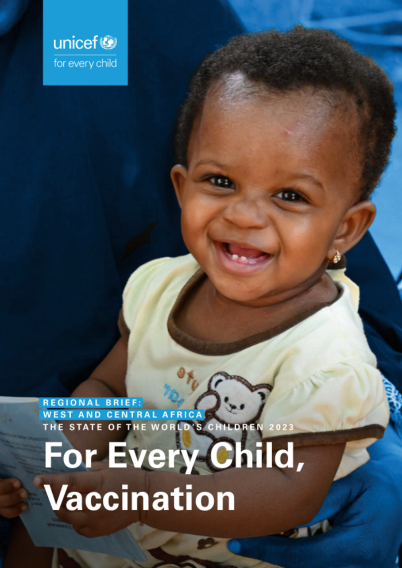
Disclaimer: Copyright infringement not intended.
Context
- UNICEF India released the agency’s global flagship report ‘The State of the World’s Children 2023: For Every Child, Vaccination,’ highlighting the significance of childhood immunization.
- Also, the Vaccine Confidence Project (London School of Hygiene and Tropical Medicine) was published by UNICEF.
Findings of the Report
Popular perception of vaccines
- Only China, India, and Mexico, that is three out of the 55 countries studied for popular perception of the importance of vaccines for children, showed improvement.
Vaccine confidence
- Vaccine confidence marked a decline in over a third of the studied countries, including the Republic of Korea, Papua New Guinea, Ghana, Senegal, and Japan after the start of the pandemic.
Vaccine Hesitancy
- The report warns of the growing threat of vaccine hesitancy due to factors such as access to misleading information and declining trust in vaccine efficacy.
Role of COVID-19 Pandemic in Interrupted Childhood Vaccination
- The decline in vaccine confidence globally comes amid the largest sustained backslide in childhood immunization in 30 years, fuelled by the COVID-19 pandemic.
- The pandemic interrupted childhood vaccination almost everywhere, especially due to intense demands on health systems, the diversion of immunization resources to COVID-19 vaccination, health worker shortages and stay-at-home measures.

Decreasing levels of vaccination coverage
- A total of 67 million children missed out on vaccinations between 2019 and 2021, with vaccination coverage levels decreasing in 112 countries.
Implications of poor vaccine coverage
- In 2022, the number of measles cases was more than double the total in the previous year.
- The number of children paralyzed by polio was up 16% year-on-year in 2022.
- When comparing the 2019 to 2021 period with the previous three-year period, there was an eight-fold increase in the number of children paralysed by polio, highlighting the need to ensure vaccination efforts are sustained.
Zero-dose children in India
- There has been an increase in the number of zero-dose (unreached or missed out) children to three million— between 2020 and 2021— during the pandemic in India.
Comeback by India
- In the last year, India was able to arrest the backslide and bring down the number of zero-dose (unreached or missed out) children to 2.7 million.
- This represents a smaller proportion of India’s under-5 child population given its size and the world’s largest birth cohort.
Reasons behind India’s Achievement
- Achievement of India can be attributed to sustained evidence-based catch-up campaigns initiated by the government, including the
- Intensified Mission Indradhanush (IMI),
- Continued provision of comprehensive primary health care services,
- A strong routine immunization programme and
- Dedicated health workers.
- Steady progress is being made to reach the last mile and the last child.
Role of Pandemic in exacerbating existing inequities
- The pandemic also exacerbated existing inequities. For far too many children, especially in the most marginalized communities, vaccination is still not available, accessible or affordable.
Pre pandemic scenario
- Even before the pandemic, progress on vaccination had stalled for almost a decade as the world struggled to reach the most marginalised children.
Status of inequity
- New data produced for the report by the International Center for Equity in Health found that in the poorest households, 1 in 5 children are zero-dose while in the wealthiest, it is just 1 in 20.
Challenges
- Unvaccinated children often live in hard-to-reach communities such as rural areas or urban slums.
- They often have mothers who have been unable to attend school and are given little say in family decisions. These challenges are most significant in low- and middle-income countries, where about 1 in 10 children in urban areas are zero doses and 1 in 6 in rural areas.
- In upper-middle-income countries, there is almost no gap between urban and rural children.
Closing Remarks
- Reaching the last child with immunization is a key marker of equity that benefits not only the child but also the whole community. Routine immunizations and strong health systems can best prepare us in preventing future pandemics and reducing morbidity and mortality.
READ:
UNICEF:
https://www.iasgyan.in/daily-current-affairs/niti-aayog-and-unicef-signed-a-statement-of-intent
National Family Health Survey:
https://www.iasgyan.in/daily-current-affairs/national-family-health-survey-finds-jump-in-vaccination
|
PRACTICE QUESTION
Q. Reaching the last child with immunization is a key marker of equity that benefits not only the child but also the whole community. Justify.
|
-min.jpg)
https://www.thehindu.com/sci-tech/health/india-is-1-of-3-countries-where-confidence-in-childrens-vaccines-has-increased-unicef-report/article66758883.ece




